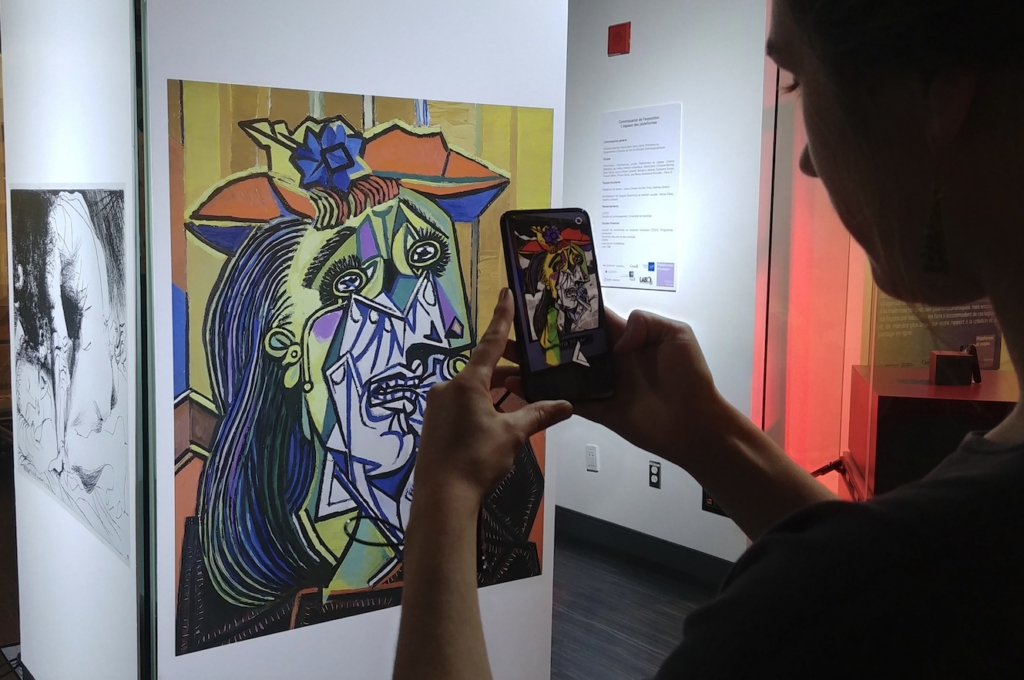The Carrefour des arts et des sciences is the site of a group exhibition which examines the consequences of the growing role of digital platforms in our lives.

Lou Andrysiak
On 21 September, theCarrefour des arts et des sciences hosted the opening of the exhibition L’espace des plateformes, on view until 8 December.
Organised by the curators Christine Bernier, Marta Boni and Zaira Zarza, who are also professors in the Département d’histoire de l’art et d’études cinématographiques, L’espace des plateformes presents works by researchers interested in the use of digital platforms and, in particular, in the political, social and environmental questions they raise.
Witnessing the Transformation of Platforms
The exhibition addresses the various everyday uses to which digital platforms are put, from the creation of the earliest game consoles to the arrival of streaming platforms and the growth of ASMR (Autonomous Sensory Meridian Response). It also treats the evolution of digital technology from a historical perspective.
“What is peculiar about an exhibition such as this one is the ability to see the transformation in the meaning of a platform,” observes Frédéric Bouchard, Dean of the Faculté des arts et des sciences of the Université de Montréal, who was present at the opening alongside the curators, the artists and members of the public.
For Marta Boni, this inaugural evening was a success: “I discovered a slightly different way [of disseminating knowledge], which pleased me greatly, and a different way of looking at the questions of how [platforms] are used. I find there is a nice balance between having chosen an exhibition and the theme, that of uses.… The spatial arrangement, the physically concrete form, is a success.”
Questioning Uses
Tara Karmous and Clémentine Brochet, two former students in the cinema studies master’s program, with the developer Jonathan Hardy, created La fin des paillassons (2023), one of the interactive works in the exhibition. This piece offers a feminist perspective on the work of Pablo Picasso through portraits of three of his companions. Using smart phones placed at the disposal of the public, visitors can hear the voices of these women talking about the life they shared with the painter, accompanied by augmented reality animation.
“It truly is a concept which could be transposed, making it possible to revisit many other artists,” Brochet explains.
“We have so many ideas for a follow-up!” adds Karmous. “We want to go even further, to find other artists and ask even more questions.”
The consequences of, and issues related to, the omnipresence of platforms are also taken up in the exhibition. Zaira Zarza remarks that it is a “showcase in which we try to bring out the extraordinary contrasts between our comfortable work spaces and the planned obsolescence of apparatuses whose devastating ecological impact should always be emphasised.”
For his part, Frédéric Bouchard points out that L’espace des plateformes “is part of a wider project which includes a variety of public activities over the course of the year.” A radio program and an international conference will also be presented as part of the global project Platforms and Uses: Cinema, Television, Video Games and Digital Creation. Several interdisciplinary and international research groups are partners in this project, such as Labo Télé, LabEx ICCA, cinEXmedia, the Groupe de recherche sir l’avènement et la formation des identités médiatiques (GRAFIM) and the Centre de recherche interuniversitaire sur les humanités numériques (CRIHN).
